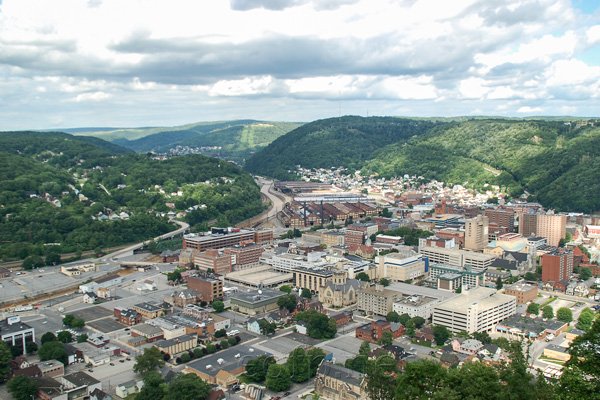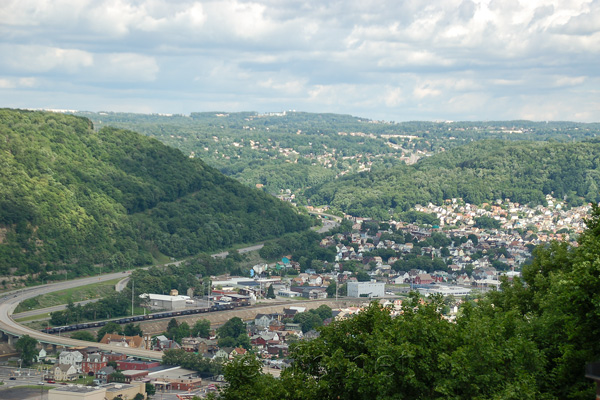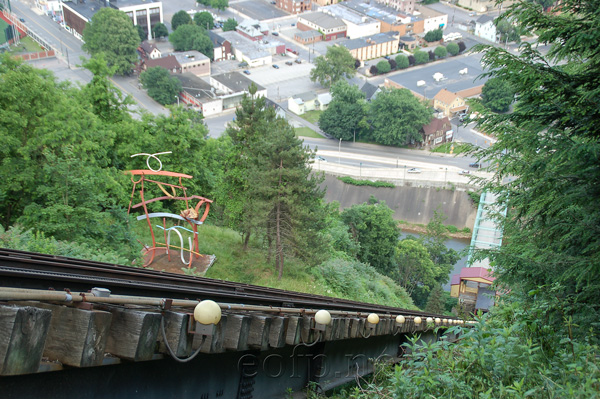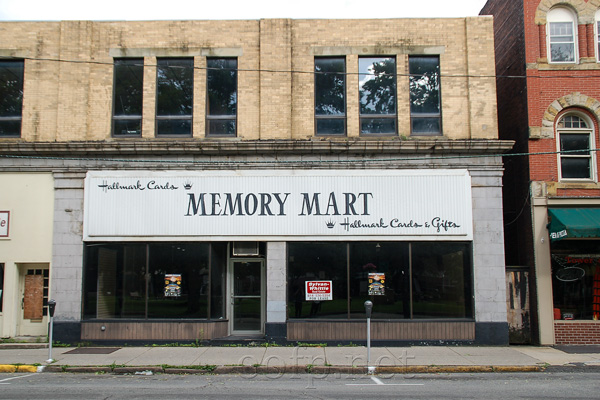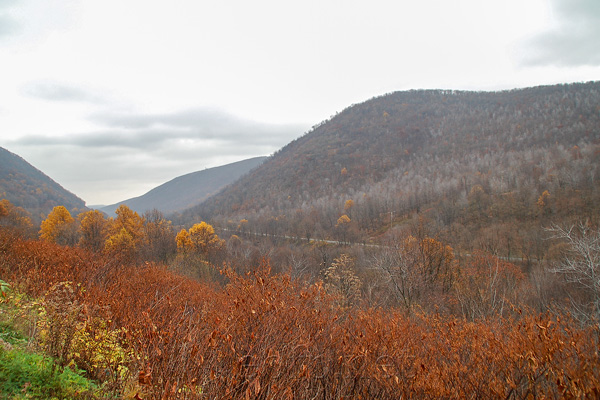9/27/2013
Johnstown Pennsylvania
Downtown Johnstown Pennsylvania from the incline
Johnstown Pennsylvania is a classic Pennsylvania steel city with a very unique history. Johnstown was originally organized as a town in 1800. Johnstown was at the western end of the Pennsylvania main line canal and was the transfer station from the canal to the Allegheny portage railroad. The Pennsylvania Main Line Canal was built to compete with the Erie Canal but was never as heavily used. The canal system was designed to carry goods from the Atlantic to the Ohio River and relied on a railroad segment beginning in Johnstown to carry material over the mountains. Because of its location in a highly productive coal mining region and it's transportation connections, Johnstown became a center for steel manufacture in the second half of the 19th century. The population of Johnstown had grown to 21,805 by the 1890 census.
Johnstown Pennsylvania from the incline
Lake Conemaugh was a two mile long and mile wide reservoir that had been created by damning the South Fork of the Conemaugh river to supply water to the Pennsylvania canal. After the canal was closed the reservoir was sold to a group of wealthy business men from Pittsburgh including Henry Frick. The group turned the lake and surrounding grounds into a resort whose members included 61 of the wealthiest men in Pittsburgh including Mellon, and Carnegie. Because of modifications the group made to the dam and poor maintenance the dam collapsed catastrophically on May 31, 1889. The entire lake swept down the river into East Conemaugh and Franklin first and then Johnstown. The resulting flood devastated Johnstown and killed at least 2,209 people. It remains the most deadly disaster in Pennsylvania history and was at that time the deadliest disaster in US history. The owners of the dam and resort were never held accountable and contributed very little to the clean up effort.
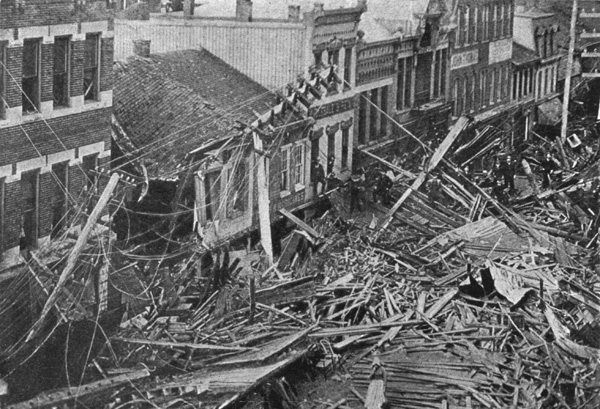
Downtown Johnstown after the flood of 1889
Johnstown recovered quickly from the flood and continued to grow becoming a major center for steel production. In 1920 it's population reached 67,327. Johnstown's population plateaued for the next 40 years at around 60,000 but surrounding communities continued to grow as did Johnstown's importance as a commercial center. Steel production and employment in Johnstown peaked in the late 1940s with 13,000 people working in the mills. After that, investment in the mills declined and production slowly ground to a halt. Since the 1980s there has been very little steel related work in Johnstown. Many of the old mill buildings survive but have been marginally reproposed or are empty. Many of the mill structures have been destroyed. The Bethlehem Blast furnaces which were beautifully photographed by Bernd and Hilla Becher in 1980 were demolished in 1985.
The Johnstown incline
After the collapse of local steel manufacturing things looked grim for Johnstown. Unemployment shot up and the population began to shrink. Then a white knight appeared named John Murtha. Murtha represented the congressional district Johnstown is in from 1969 until his death in 2010. As Murtha's tenure in Congress grew so did his power to appropriate funds. He became legendary for earmarking funds for his home district. Johnstown being the largest city in the district was the largest beneficiary. It was reported in 2008 that Murtha was sending $100 million a year in federal appropriations back to his district. Much of this money was in the form of defence contracts for work preformed by companies headquartered in Johnstown. Much of the work was of questionable value. Johnstown's very modern spacious airport has reportedly received $200 million in federal subsidies over the years, is very lightly used and has only 2 scheduled commercial flights to nearby cities. Johnstown also has an impressive convention center, museums, a giant new hospital, new freeways and bridges etc. I mention all of this not because I'm crusading against federal pork but because Murtha is dead now and without Murtha Johnstown's future seems precarious.
Downtown Johnstown
Johnstown has block after block of intact and mostly unaltered two story wood frame houses similar those built in other steel towns in Western Pennsylvania and West Virginia. Johnstown's neighborhoods seem uniquely untouched. Downtown Johnstown has been largely reworked over the years but many minor commercial districts with 19th and turn of the century buildings exist outside of downtown. The river valleys and hills around Johnstown are beautiful. The population of Johnstown has fallen from it's peak of 67,327 to it's current population of 20,978 and yet the last time I was there I didn't see the blocks of empty lots and burnt out houses that are common in places with similar population declines like Youngstown, Detroit or Cleveland.
Downtown Johnstown
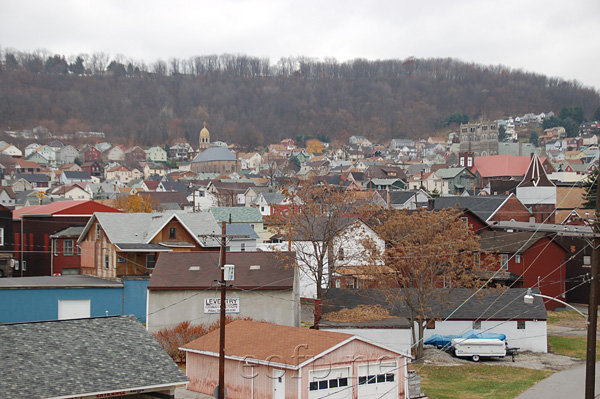
East Conemaugh next to Johnstown
Conemaugh River Valley South of Johnstown
All content on these pages Copyright Mark Hedlund 2012-2019. All rights reserved. Use in school projects and with links on social media is always okay. Please send me an email to request permission for any other use: hedlunch@yahoo.com Non-exclusive commercial publication rights for most photos is $25 per image.

